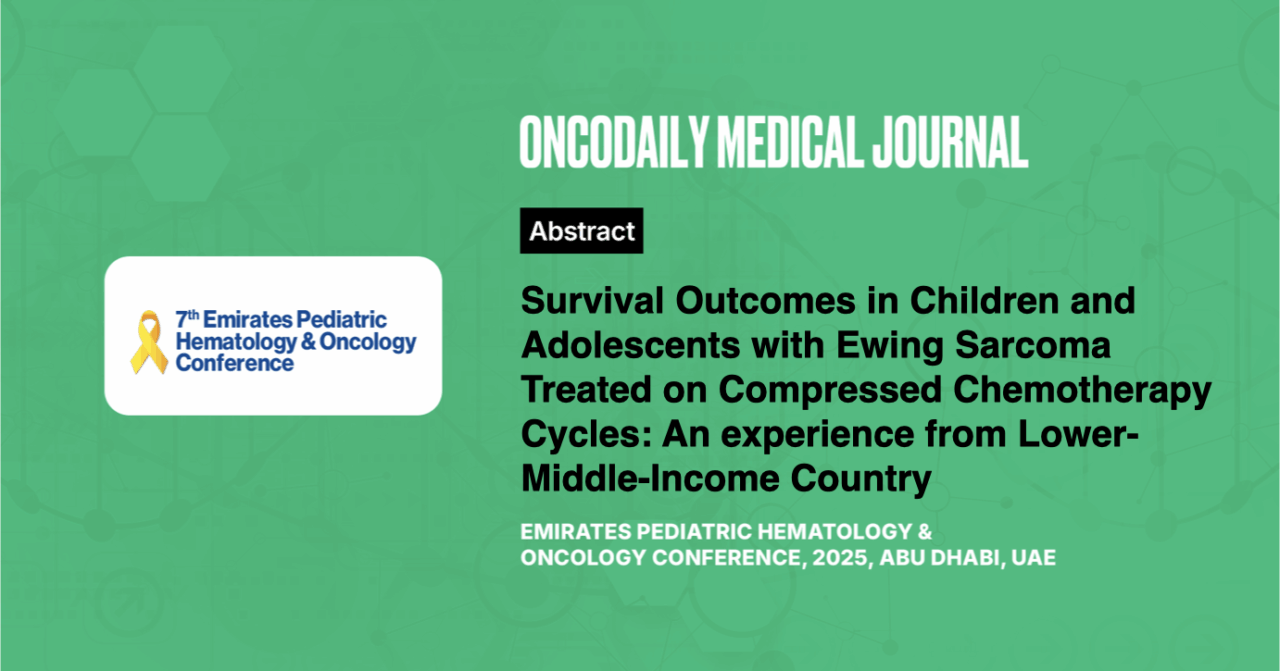Survival Outcomes in Children and Adolescents with Ewing Sarcoma Treated on Compressed Chemotherapy Cycles: An experience from Lower-Middle-Income Country
Abstract
Introduction: Ewing sarcoma is the second most common bone tumor in children, a highly malignant cancer, with micro metastasis usually present at the time of presentation. With the use of chemotherapy and newer modalities, overall survival has significantly improved in recent decades.
Reports indicate that a compressed cycle chemotherapy regimen, which involves alternating the administration of VDC (Vincristine, Doxorubicin, Cyclophosphamide) and IE (Ifosphamide, Etoposide), is a successful therapeutic option. The 5-year survival rate for non-metastatic illness ranges from 75% to 80%. However, for metastatic disease, it is around 30%. This study aimed to study the improvement in the outcome of patients diagnosed with Ewing sarcoma, who were given chemotherapy as per the compressed cycles protocol.
Methodology: This is a retrospective cohort study. A total of 154 cases were enrolled in the study with histologically proven Ewing sarcoma and Ewing sarcoma family-related cases. They were prescribed compressed cycle chemotherapy consisting of alternating VDC (Vincristine, Doxorubicin, Cyclophosphamide) and IE (Ifosphamide, Etoposide) given at a 2-week interval. Patients were followed up to 2 years (till December 2023) post-treatment, and outcomes, including overall survival and event-free survival, were recorded. Complications, including febrile neutropenia, nephrotoxicity, and cardiotoxicity, were also recorded. Data analysis was done using SPSS software version 25.0.
Results: In this study, the mean age of children was 10.83 ± 3.87 years. There were 87 (56.5%) male children and 67 (43.5%) female children. Out of 154 cases, metastatic disease was found in 5 (3.2%) cases, while 149 (96.8%) children had non-metastatic disease. Overall survival in this cohort study was noted to be 69 % (107 cases), and mortality was noted in 31 % (47 cases), mainly due to metastatic relapse in 36 (76.6%) cases, with other less common causes. Out of 145 treated patients, event-free survival was noted in 73.7 % (107 cases), while relapse was noted in 26.3% (38 cases).
Comparing metastatic with non-metastatic, a better outcome was observed in non-metastatic cases, as out of 5 metastatic treated cases, 4 relapsed (80%), and 1 patient showed event-free survival (20 %). Out of 140 non-metastatic treated cases, 34 patients (22.8%) relapsed while 106 remained well (71.2%).
Complications like Febrile neutropenia grade 4 were noted in 12.6% of cases, nephrotoxicity in 1.3% of cases, while cardiotoxicity was noted in 13.6% of cases. It has been noted that children with non-metastatic disease had significantly better chances of getting complete treatment than children with metastatic disease (p<0.05), but the difference in mortality was insignificant (p>0.05).
Conclusion: The outcome of VDC/IE is effective and can improve the outcome of children with Ewing sarcoma, especially non-metastatic disease.





